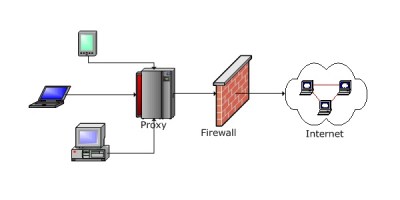Exploring MikroTik Router Proxy Server Features And Benefits
In today's era, the internet has become an integral part of our lives. Whether it's for personal or professional use, the internet has revolutionized the way we work, communicate, and access information. However, with the ever-increasing usage of the internet, there are several concerns that arise regarding privacy, security, and accessibility. In order to address these concerns, companies around the world have come up with a variety of solutions to help users tackle these issues. One such solution is a web proxy server. In this post, we will discuss everything you need to know about web proxy servers and how they can be deployed effectively.
What is a web proxy server?
A web proxy server is an intermediary server that sits between your web browser and the internet. When you access a website through a proxy server, your request first goes to the proxy server, which then makes the request to the website server on your behalf. The website server sends the requested data back to the proxy server, which then forwards the data back to your web browser. This entire process happens in the background, and you may not even realize that you are accessing the website through a proxy server.
Benefits of using a web proxy server
There are several benefits of using a web proxy server, including:
- Improved security: When you use a web proxy server, your requests are sent through an encrypted connection, which means that the data you transmit is secure. This is particularly important if you are accessing confidential or sensitive information.
- Access blocked content: In some cases, websites may be blocked in your region or by your internet service provider. By using a web proxy server, you can bypass these restrictions and access the content that you need.
- Improved speed: Web proxy servers are often able to cache frequently requested data, which can help improve the speed of your browsing experience. This is particularly useful if you are accessing data from a slow or overloaded server.
- Better anonymity: When you use a web proxy server, your IP address is hidden. This can help protect your identity and prevent advertisers from tracking your online activity.
Types of web proxy servers
There are several types of web proxy servers, including:
- Transparent proxy: A transparent proxy server identifies itself as a proxy server and forwards requests without modifying them. Transparent proxies are often used by businesses to monitor and control their employees' internet usage.
- Anonymous proxy: An anonymous proxy server provides a level of anonymity by hiding your IP address. However, these proxies can still be detected by some websites, and may not provide complete anonymity.
- High anonymity proxy: A high anonymity proxy server provides the highest level of anonymity by not disclosing the user's IP address. These proxies are often used for security and privacy reasons, but can be slower than other types of proxies.
- Reverse proxy: A reverse proxy server sits between the internet and a web server, acting as an intermediary for incoming requests. Reverse proxies are often used to load balance traffic and improve server performance.
Deploying a web proxy server
Deploying a web proxy server can be a complex process, but with the right tools and resources, it can be done effectively. Here are some key steps to consider when deploying a web proxy server:
- Choose the right web proxy server software: There are several web proxy server software options available on the market, each with its own set of features and capabilities. Some popular options include Squid, Apache Traffic Server, and Nginx.
- Configure your web proxy server: Once you have chosen your web proxy server software, you will need to configure it to meet your specific needs. This may include specifying access controls, setting up caching, and configuring SSL.
- Set up your clients: In order to use your web proxy server, you will need to configure your clients to point to the proxy server. This can be done manually or through a proxy auto-config (PAC) file.
- Monitor your web proxy server: Once your web proxy server is up and running, it's important to monitor it regularly to ensure that it is performing effectively. This may include monitoring traffic levels, caching performance, and server uptime.
Conclusion
In conclusion, a web proxy server can be an effective solution for addressing concerns related to privacy, security, and accessibility when accessing the internet. By understanding the benefits of using a web proxy server, and following best practices for deploying and monitoring it, you can help ensure that your internet usage is secure and efficient. If you're interested in deploying a web proxy server for your business or personal use, be sure to consult with a professional to ensure that you are using the right tools and strategies for your specific needs.




Post a Comment for "Exploring MikroTik Router Proxy Server Features And Benefits"